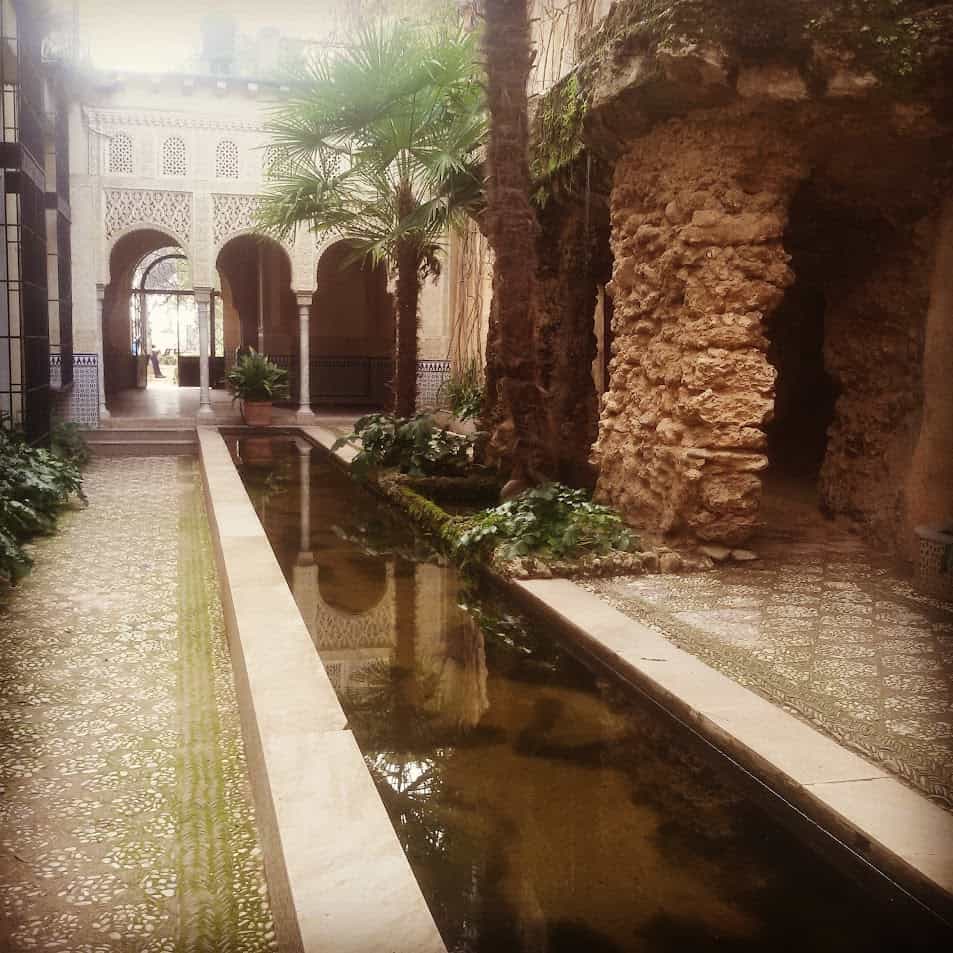- Inicio
- Negocios
- Qué ver y hacer
- Alquiler de coches
- Noticias
- Propiedades
- Agenda de ocio
EN
Carmen de los Mártires
The Carmen de los Mártires: Granada's Historic Palace and Gardens
The Carmen de los Mártires, an architectural and landscape gem in Granada, consists of a mansion surrounded by vast gardens that combine different styles and eras. This carmen, located on the southern slope of the Mauror hill next to the Manuel de Falla Auditorium and within the Alhambra complex, spans over seven hectares, making it the largest in the city. Among its attractions are Baroque, Romantic gardens, and Nasrid orchards, offering exceptional views of Granada, the Vega, and the majestic Sierra Nevada.
History of Carmen de los Mártires

The area, historically known as the Corral de los Cautivos (Prisoners’ Yard), once held Christian prisoners in Arab dungeons. During the conquest of Granada in 1492, it was from this location that Boabdil, the last Nasrid sultan, departed to surrender the city to Queen Isabel I. In honor of the Christian martyrs, Isabel ordered the construction of a chapel on the hill, which later became a Carmelite convent in 1573. Saint John of the Cross served as prior between 1582 and 1588, during which time he wrote much of his work, planted trees, and helped construct the aqueduct on the grounds.
The convent was destroyed in 1842, during the Mendizábal confiscation, and the property passed into private hands. One of its most influential owners was the Belgian engineer Humbert Meersmans de Smet, who, in 1891, transformed the pond into a romantic lake, added islands and waterfalls, and beautified the gardens with sculptures and mazes. In 1943, the Carmen de los Mártires was declared a Cultural Heritage Site (BIC) in the category of Historic Garden.
After passing through several owners, the Carmen was finally donated to the City of Granada in 1958 by Cristina de Arteaga, its last private owner. Although it experienced a period of neglect and was threatened by an urban development project in the 1970s, public pressure prevented its destruction. In 1986, the mansion was restored and opened to the public.
Gardens and Layout
The Carmen de los Mártires features a fascinating mix of gardens in various styles. The French Garden, characterized by its pond with a statue of Neptune in the center, is surrounded by sculptures representing the four seasons. Although it has changed from its original design, it now showcases denser vegetation with magnolias, palm trees, and orange trees.
El English Garden, located behind the mansion, is dominated by palm trees and features a fountain dedicated to King Philip II. This green space creates a relaxing environment with its hedges and fountains.
El Lake is another emblematic spot. Originally a watering pond, it was transformed into a romantic lake with two islands—one larger, landscaped, and with a boathouse that mimics a medieval ruin, and a smaller one home to swans and ducks.


El Nasrid Courtyard, designed in 1944, pays tribute to Nasrid gardening. With a pond inspired by the Patio de la Acequia at the Alhambra and surrounded by flower pots and windows framed by jasmine, this space evokes the elegance of Muslim gardens. The courtyard is decorated with traditional Granada paving and features a small cave carved into one of its walls.
Finally, the Orchard has been restored to reflect the original convent-era vegetation, featuring medicinal and aromatic plants such as rosemary, thyme, lavender, and strawberries. This section preserves the historical essence of the Carmen, connecting its agricultural heritage with its natural beauty.
A Cultural Treasure of Granada

Carmen de los Mártires remains one of the most iconic spaces of Granada’s historical and landscape heritage. Its rich history, spanning from the Nasrid period to the present day, along with its magnificent gardens, makes this location a must-visit for lovers of history, architecture, and nature.
Visitors can explore the Carmen de los Mártires year-round with free entry. From April 1st to October 14th, the site is open Monday to Friday from 10:00 a.m. to 2:00 p.m. and 6:00 p.m. to 8:00 p.m., while on weekends and holidays, it operates from 10:00 a.m. to 8:00 p.m. From October 15th to March 31st, it is open Monday to Friday from 10:00 a.m. to 2:00 p.m. and 4:00 p.m. to 6:00 p.m., with weekend and holiday hours from 10:00 a.m. to 6:00 p.m.
In addition to its historic charm, the venue is available for private rentals through the City Council, offering a unique setting for weddings and special events. It has also served as the backdrop for numerous films and TV series. To learn more about its cinematic history, visit our Page on movies shot in Granada.
También puede interesarte...
Visitas guiadas a la Alhambra
Una visita a Granada no está completa sin ver la Alhambra. Consulte nuestras sugerencias de visitas guiadas haciendo clic aquí.
